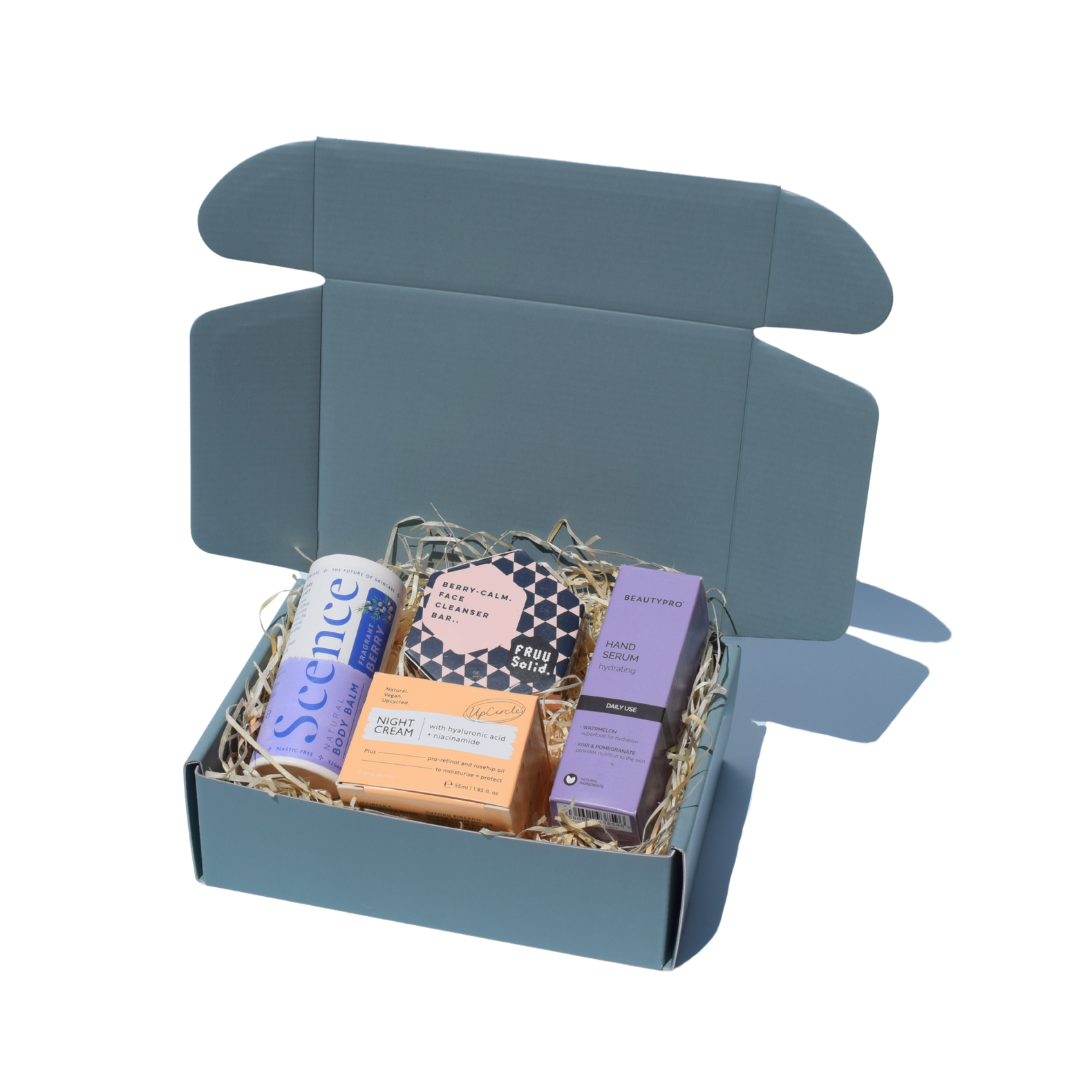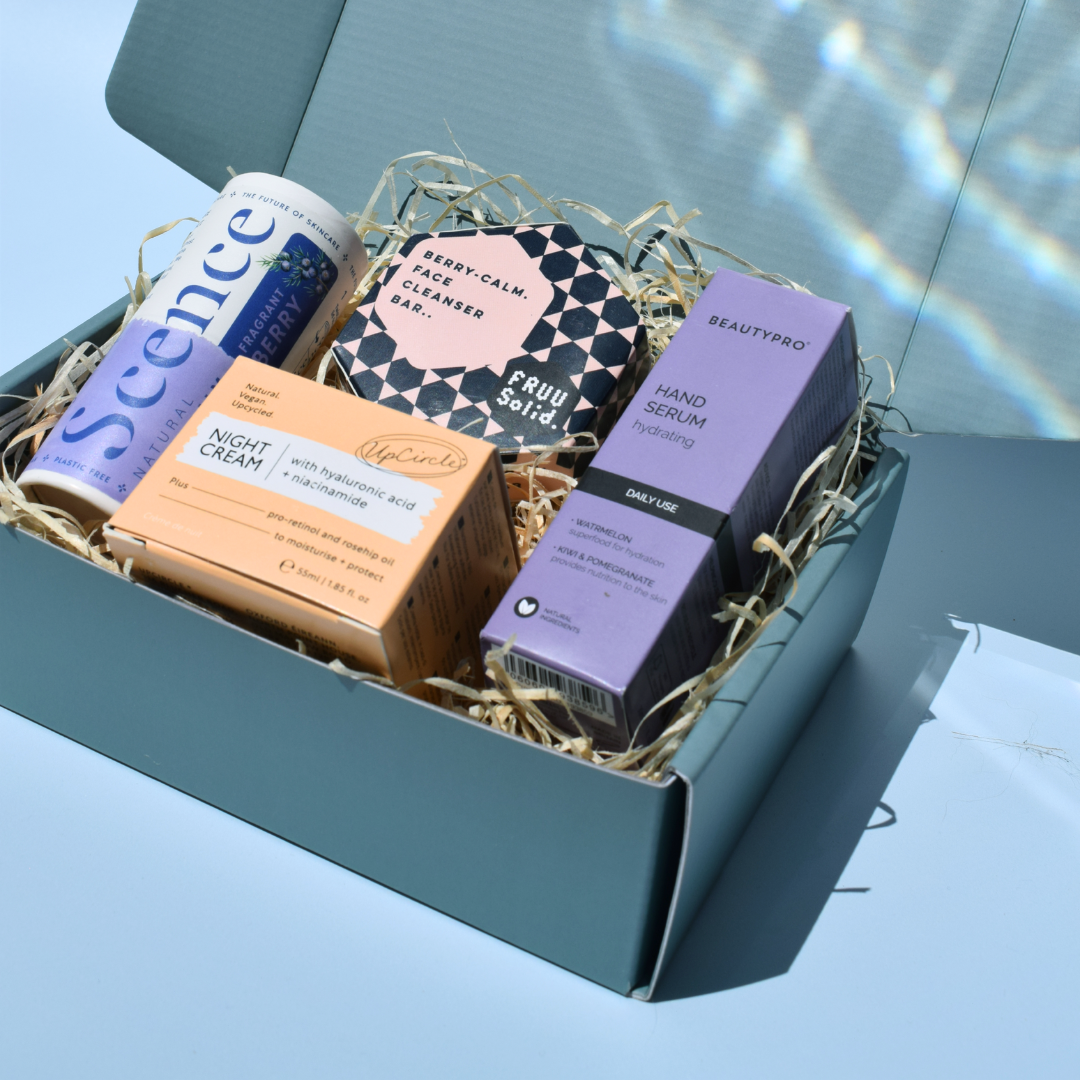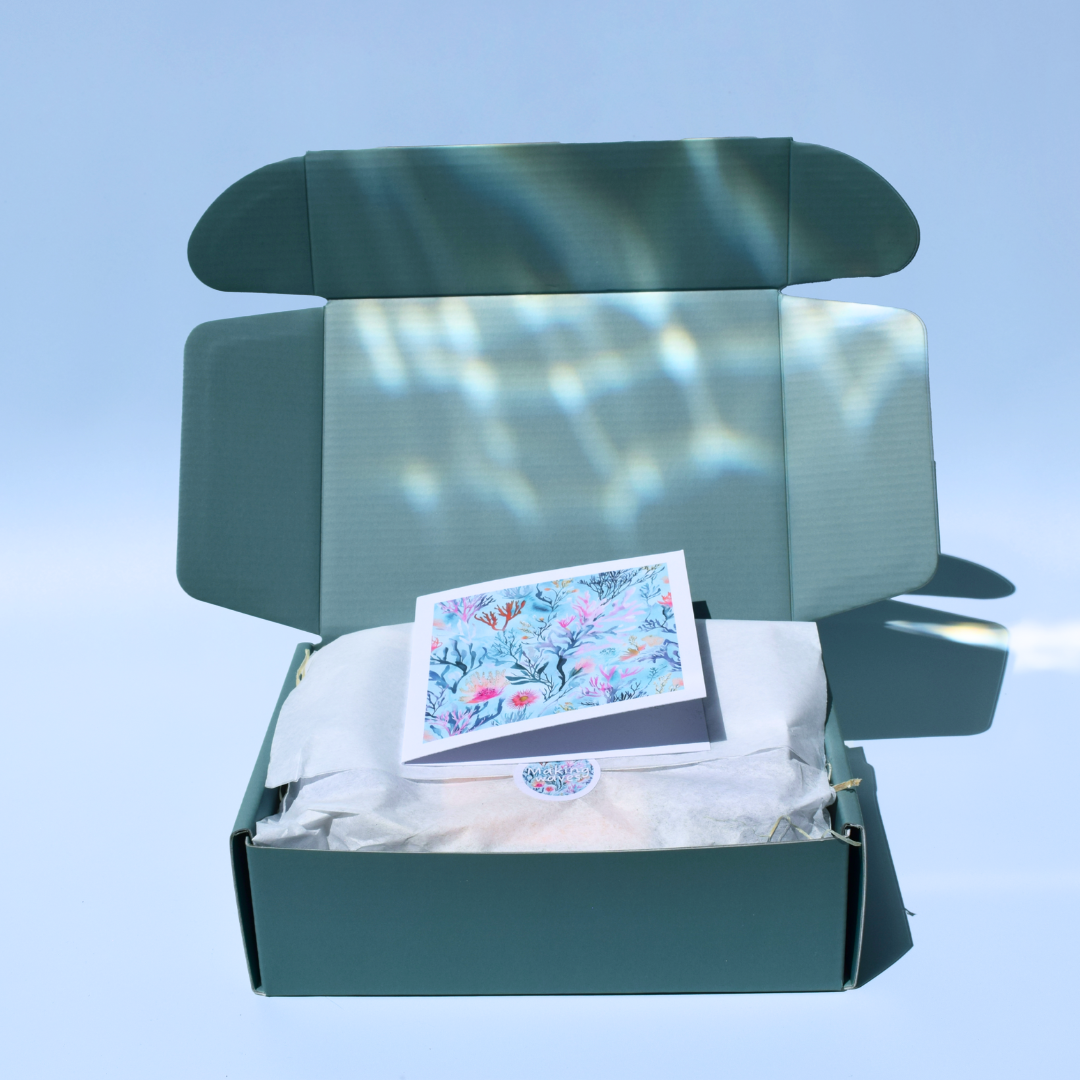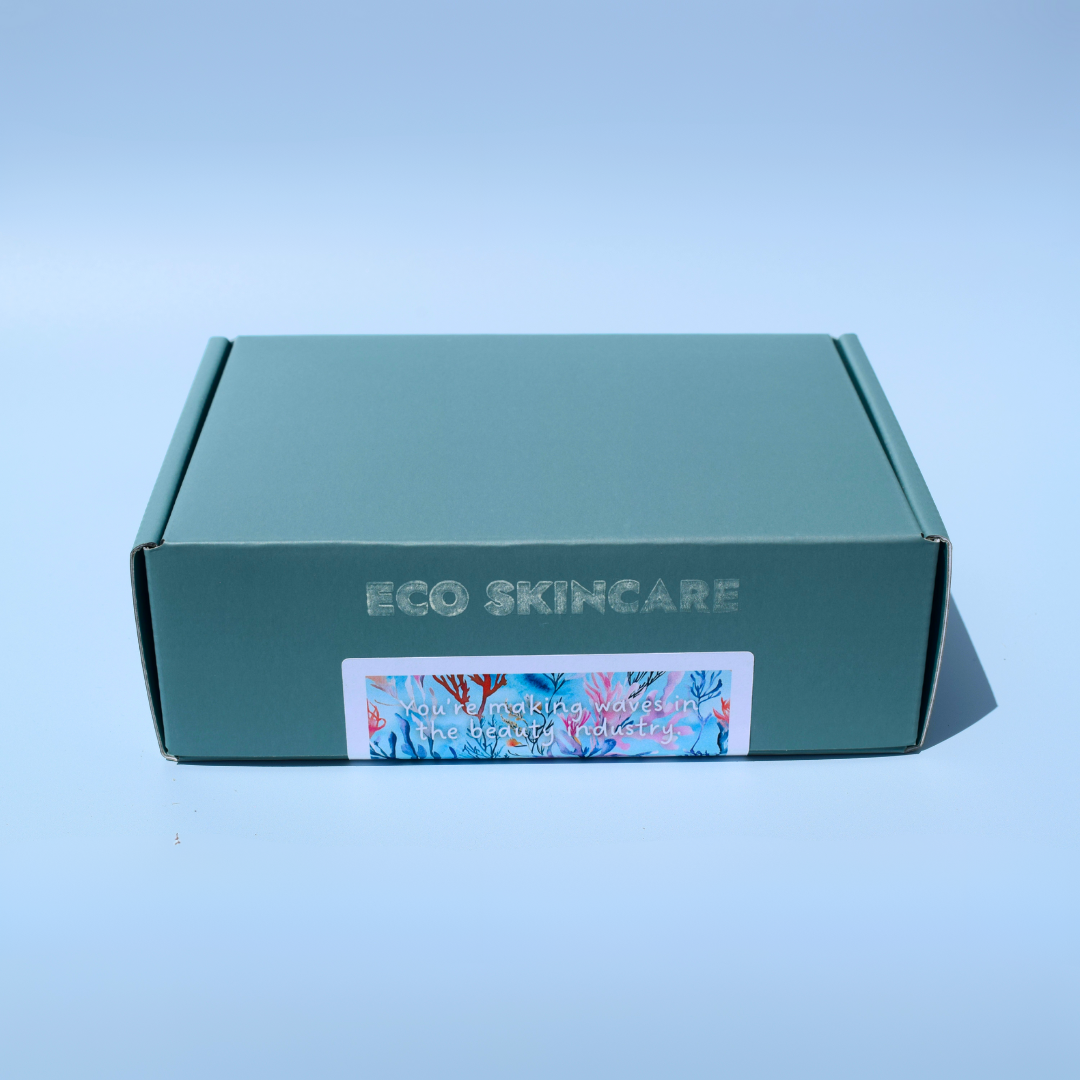
Winter Skin SOS: Fixing Dehydration, Flaking, and Sensitivity Fast
Share
Winter Skin SOS: Fixing Dehydration, Flaking, and Sensitivity Fast
British winter weather can be extremely harsh on your skin. Cold winds, central heating, and low humidity can damage your skin barrier from November through March. If you're experiencing tightness, flaking, redness, or heightened sensitivity, you're not alone—and you can repair your skin dramatically with the right approach.
Understanding Winter Skin Damage: What's Actually Happening
The British Winter Skin Crisis
Your skin's outermost layer, the stratum corneum, is like a brick wall held together by lipids (ceramides, cholesterol, and fatty acids). Winter disrupts this delicate structure in three key ways:
- Cold, dry air increases transepidermal water loss (TEWL), dehydrating the skin and slowing natural oil production, which weakens the barrier's ability to retain moisture.
- Indoor heating reduces humidity, pulling moisture from your skin as it tries to rehydrate the dry air around it.
- Rapid temperature changes cause blood vessels to expand and contract, potentially increasing inflammation and sensitivity, especially on the cheeks and nose.
The Three Stages of Winter Skin Damage
- Stage 1: Dehydration – Tightness, dullness, fine lines, and discomfort after cleansing.
- Stage 2: Barrier Disruption – Flaking, rough texture, increased sensitivity, mild redness, and stinging.
- Stage 3: Barrier Crisis – Severe sensitivity, persistent redness, visible and persistent flaking, burning, and extreme reactivity.
Emergency Repair Protocol: The First 48 Hours
During a barrier crisis, simplify your routine and focus on repair.
Immediate Action: Barrier First Aid
- Use only three products: Gentle cleanser, barrier repair treatment, and occlusive protection. Avoid actives, exfoliants, and harsh ingredients until your skin heals.
- Cleanse gently: Use a pH-balanced, non-foaming cleanser. Avoid hot water and only cleanse in the evening if possible.
- Apply barrier ingredients to damp skin: After cleansing, use a moisturizer with ceramides, cholesterol, and fatty acids immediately. A 3:1:1 ratio mimics the skin's natural lipid composition, but a 1:1:1 ratio has also shown strong barrier repair in clinical studies.
The Humectant Sandwich Technique
- Layer 1: Apply a humectant serum (hyaluronic acid, glycerin, panthenol) to damp skin. Humectants draw water into the skin, providing instant hydration.
- Layer 2: Seal with a ceramide-rich barrier cream.
- Layer 3 (severe cases): Finish with a plant oil (rosehip, jojoba) or balm as an occlusive to lock in moisture overnight.
What to Avoid
- All exfoliating acids, retinoids, vitamin C, essential oils, fragrance, alcohol-based toners, and physical exfoliation.
- Hot showers and long baths.
Intensive Treatment by Severity Level
Mild Dehydration Protocol (Stage 1)
Morning: Rinse with water or a hydrating mist, humectant serum, moisturizer with ceramides or plant oil, SPF (even in winter—UVA penetrates clouds).
Evening: Gentle cleanser, humectant serum, barrier repair cream, and a few drops of oil if needed.
Timeline: Improvement in 2–3 days, full recovery in 5–7 days.
Moderate Barrier Disruption Protocol (Stage 2)
Morning: Rinse with water only, calming serum, barrier repair cream, mineral SPF.
Evening: Gentle cleanser, humectant serum, barrier repair cream, facial oil or balm on driest areas.
Twice weekly: Hydrating sheet mask or overnight mask with hyaluronic acid and ceramides.
Timeline: Relief within 24–48 hours, visible improvement in 4–5 days, full recovery in 10–14 days.
Severe Barrier Crisis Protocol (Stage 3)
Morning & Evening: Splash with lukewarm water (no cleanser in the morning), apply barrier repair cream to damp skin, seal with balm or oil. Use only these products until skin calms. Reapply balm as needed during the day.
Protection: Wear a scarf, use a humidifier indoors (40–50% humidity), keep bedroom temperature low.
Timeline: Comfort within 48 hours, visible healing at 5–7 days, full recovery in 2–3 weeks.
Key Ingredients for Winter Skin Repair
Ceramides
Ceramides make up about 50% of the skin's barrier. Winter and inflammation lower ceramide levels, leading to dryness and irritation. Ceramide creams help restore barrier function effectively.
Humectants
- Hyaluronic acid: Hydrates, plumps, and reduces fine lines.
- Glycerin: Draws water from deeper skin layers and atmosphere.
- Panthenol (provitamin B5): Calms and supports repair.
Occlusives
- Rosehip, sea buckthorn, jojoba oils: Seal in hydration, support lipid barrier.
- Squalane: Lightweight, suitable for oilier types.
Prevention Strategies: Protecting Your Repaired Barrier
- Cleanse less: Thoroughly only in the evening if possible.
- Layer hydrating products: Humectant serum under lighter moisturizer.
- Daily SPF: Even in winter—UVA is present year-round.
- Use a facial oil: A few drops mixed with evening moisturizer.
- Humidifier: Maintain indoor humidity at 40–50%.
- Lower thermostat: 18–20°C reduces humidity gap.
- Protect face outdoors: Scarf or balm for exposed areas.
- Limit hot showers: Lukewarm, brief showers.
Lifestyle Support
- Hydrate: Drink fluids, eat hydrating foods.
- Essential fatty acids: Omega-3s and -6s support skin lipids.
- Manage stress: Cortisol impairs barrier function.
When to Seek Professional Help
Consult a dermatologist if you experience:
- No improvement after 14 days of barrier repair.
- Spreading redness, weeping, crusting, intense itching, or suspected allergic reaction.
Your Winter Skin Recovery Action Plan
Today: Assess your skin damage, simplify your routine, and gather barrier-repair products.
This week: Follow your protocol, address environmental factors, resist adding new products.
This month: Reintroduce other products gently, maintain winter skin habits.
Your skin is designed to heal. Remove obstacles, provide the right ingredients, and your barrier will recover—even in the harshest British winter.
References
- British Skin Foundation. "Look after your winter skin." [Blog post].
- Cleveland Clinic. "What Are Ceramides?" [Health Essentials].
- Beauty Thinkers. "Ceramides to the Rescue! How to Restore Your Skin Vibrancy in 28 Days." [Blog post].
- PMC. "The Efficacy of Moisturisers Containing Ceramide Compared with..." [Review].
- PMC. "An Investigation of the Skin Barrier Restoring Effects of a Cream and..." [Study].
- Dot & Key. "Can Moisturizers Repair Your Skin Barrier? Experts Answered!" [Blog post].
- CeraVe. "Ceramides & Hyaluronic Acid: Their Role in Achieving Beautiful Skin." [Blog post].
- Cancer Research UK. "The UV Index and Sunburn Risk." [Information].
- PMC. "Public Awareness and Behaviour in Great Britain in the Context of Sunlight Exposure..." [Review].
- PMC. "Winter Skin Cancer Warning as More Brits Than Ever Head for the Sun." [News].
- The Dangers of Winter Sun | Skin Care Network. [Blog post].
- PMC. "Behaviour and sun exposure in holidaymakers alters skin microbiota..." [Review].
- PMC. "Impact of climate change on skin cancer." [Review].
- GOV.UK. "HECC 2023 report. Chapter 13. Solar radiation and public health." [PDF].
- Dot & Key. "Ceramide-Containing Adjunctive Skin Care for Skin Barrier Restoration During Acne Vulgaris Treatment." [Review].
- Beauty Thinkers. "Ceramides to the Rescue! How to Restore Your Skin Vibrancy in 28 Days." [Blog post].
- Cleveland Clinic. "What Are Ceramides?" [Health Essentials].









